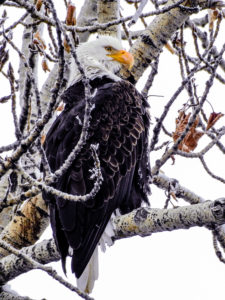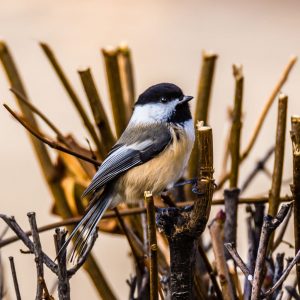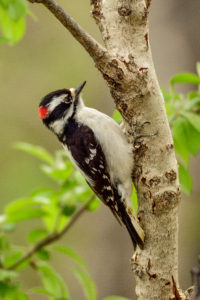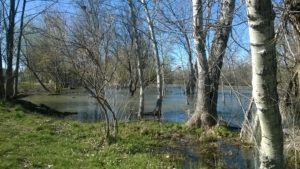by Rob Tiedemann, Ph.D.
-
- “What do we want . . . empirical science. When do we want it . . . after peer review.”
-
- (April 22, 2017 Sign displayed at the March for Science, Boise, Idaho)
By any objective measure employed by peer reviewed science – including species diversity, number of habitat types, and community structure – rivers and their forested floodplains provide greater quantity and quality of wildlife habitat as compared to reservoirs. This is intuitive to most of us who recreate in the outdoors and interact with anglers, hunters, and naturalists.
Periodic flood flows are needed to maintain the health of riparian habitat. Among other public benefits, flood
 flows: (a) recharge the shallow groundwater aquifer which later releases water to down river wetlands, (b) sweep the channel free of debris and maintain the conveyance capacity of the river, (c) control noxious weeds by physical disturbance and prolonged inundation, and (d) establish a seedbed for black cottonwood, the dominant native tree species of the region.
flows: (a) recharge the shallow groundwater aquifer which later releases water to down river wetlands, (b) sweep the channel free of debris and maintain the conveyance capacity of the river, (c) control noxious weeds by physical disturbance and prolonged inundation, and (d) establish a seedbed for black cottonwood, the dominant native tree species of the region. -
- “What do we want . . . empirical science. When do we want it . . . after peer review.”

Cottonwoods are intolerant of shade and require flood flow events to provide fresh alluvium within the channel, and scour of the adjacent floodplain to remove competing species that may shade young seedlings. In unregulated rivers, this commonly happens only one in ten years, leading to the establishments of cohorts of cottonwoods in large, same age stands. The resulting mosaic of blocks of cottonwoods of different sizes – seedlings, whips, immature, and mature trees – contributes to the diversity of habitat for wildlife, especially birds which include bald eagle, osprey, great blue heron, black capped chickadee and other song birds.

The cottonwood forest is also essential for its contribution to the base of the food web, and is the principal source of nourishment for the aquatic ecosystem. Each fall, the massive amount of leaf litter that falls to the ground flushes to the river and provides the carbon needed to fuel the ecosystem. No other species contributes an equivalent amount of energy to feed the community of aquatic insects, that feed the fishes making the river their home.
 Lastly, the cottonwood forest lessens the impacts of urbanization by shading the river and moderating water temperatures to make the river habitable for cold water species like rainbow trout. And, it sequesters nutrients, like phosphorous, which has been documented in the scientific literature to cause nuisance blooms of algae in the Lower Boise River.
Lastly, the cottonwood forest lessens the impacts of urbanization by shading the river and moderating water temperatures to make the river habitable for cold water species like rainbow trout. And, it sequesters nutrients, like phosphorous, which has been documented in the scientific literature to cause nuisance blooms of algae in the Lower Boise River.
The profits to the public resulting from the remaining free flowing portions of the Boise River and its tributaries are observable, measurable, and have been demonstrated repeatedly. These three criteria are the foundation of science and distinguish it from speculation, casual observation, or self-serving interest. Public policy will determine future management of the Boise River. I value that which is based on information with origins in science. It’s a good way to do business.
Rob Tiedemann, Ph.D.
Certified Professional Wetland Scientist – Society of Wetland Scientists No. 0000702
Certified Wetland Delineator – US Army Corps of Engineers April 15, 1994
Certified Fisheries Scientist – American Fisheries Society No. 1,717
Certified Wildlife Biologist – The Wildlife Society December 10, 1986
Certified NPDES BMP Designer – Idaho Transportation Department 1996
Photos: Boise River Floodplain by Community LLC
Bald Eagle, Black-capped Chickadee, and Downy Woodpecker by Ken Miracle
 flows: (a) recharge the shallow groundwater aquifer which later releases water to down river wetlands, (b) sweep the channel free of debris and maintain the conveyance capacity of the river, (c) control noxious weeds by physical disturbance and prolonged inundation, and (d) establish a seedbed for black cottonwood, the dominant native tree species of the region.
flows: (a) recharge the shallow groundwater aquifer which later releases water to down river wetlands, (b) sweep the channel free of debris and maintain the conveyance capacity of the river, (c) control noxious weeds by physical disturbance and prolonged inundation, and (d) establish a seedbed for black cottonwood, the dominant native tree species of the region.